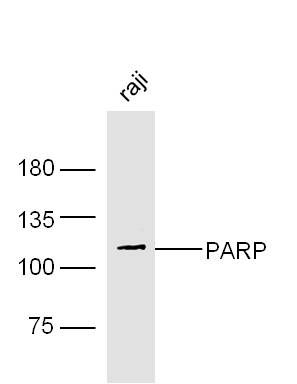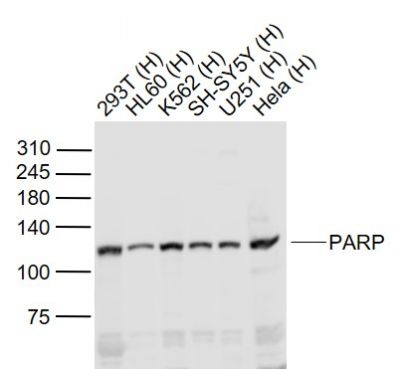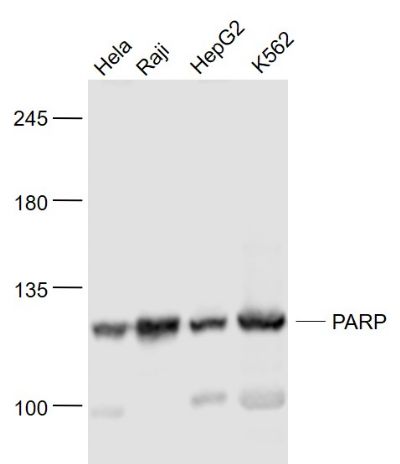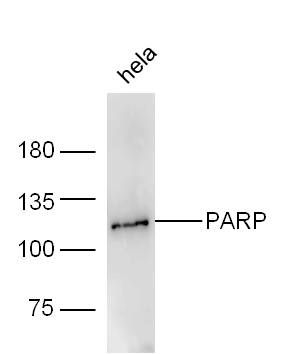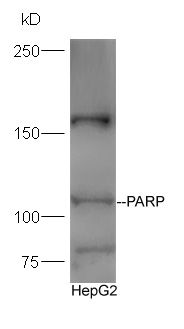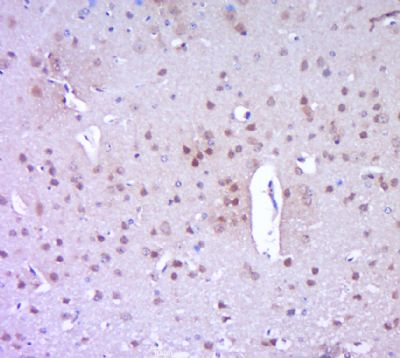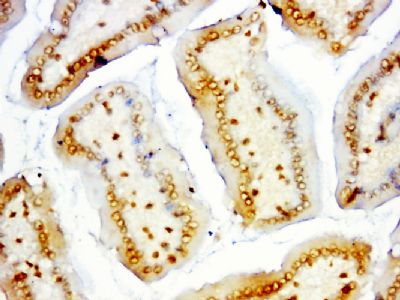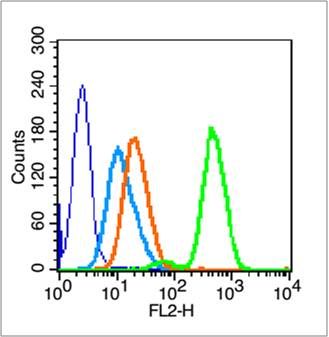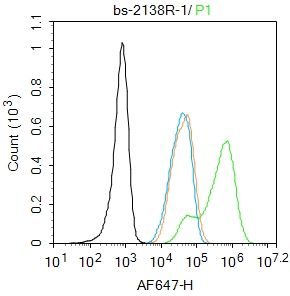[IF=2.72] Sudeshna Nandi. et al. Anti-cancer effect of astrakurkurol from a folklore tribal mushroom on human hepatocellular carcinoma cells via mediating cell cycle inhibition, apoptosis, and migration. 2021 Nov 22 WB ; Human.
[IF=11.508] Qinyu Ma. et al. Osteoclast-derived apoptotic bodies couple bone resorption and formation in bone remodeling. Bone Res. 2021 Jan;9(1):1-12 WB ; Mouse.
[IF=2.842] Chen J et al. Lipoic Acid Decreases the Expression of Poly ADP-Ribose Polymerase and Inhibits Apoptosis in Diabetic Rats. Diabetes Metab Syndr Obes
. 2020 May 20;13:1725-1731. IHSLCP ; Rat.
[IF=4.925] Yuan P et al. The nanomaterial-induced bystander effects reprogrammed macrophage immune function and metabolic profile. Nanotoxicology
. 2020 Oct;14(8):1137-1155. WB ; Human.
[IF=4.522] Han S et al. FHL1 regulates myoblast differentiation and autophagy through its interaction with LC3. J Cell Physiol. 2019 Oct 21. WB ; Chicken.
[IF=3.098] Fan Y et al. S5, a Withanolide Isolated from Physalis Pubescens L., Induces G2/M Cell Cycle Arrest via the EGFR/P38 Pathway in Human Melanoma A375 Cells.(2018) Molecules 23(12) WB ; Human.
[IF=1.45] Omar, S. S., R. G. Aly, and N. M. Badae. "Vitamin E improves testicular damage in streptozocin‐induced diabetic rats, via increasing vascular endothelial growth factor and poly (ADP‐ribose) polymerase‐1." Andrologia (2017). IHSLCP ; Rat.
[IF=12.88] Ma, Juan, et al. "A Crucial Role of Lateral Size for Graphene Oxide in Activating Macrophages and Stimulating Pro-inflammatory Responses in Cells and Animals." ACS nano (2015). WB ; Mouse.
[IF=4.432] Luya Pu. et al. Icariin arrests cell cycle progression and induces cell apoptosis through the mitochondrial pathway in human fibroblast-like synoviocytes. Eur J Pharmacol. 2021 Dec;912:174585 WB ; Human.
[IF=2.466] Jinjiang Yang. et al. Platelet-rich plasma attenuates interleukin-1β-induced apoptosis and inflammation in chondrocytes through targeting hypoxia-inducible factor-2α. Tissue Cell. 2021 Sep;:101646 WB ; rat.
[IF=3.367] Lijin Guo. et al. Whole Transcriptome Analysis of Chicken Bursa Reveals Candidate Gene That Enhances the Host’s Immune Response to Coccidiosis. Front Physiol. 2020; 11: 573676 WB ; Chicken.
[IF=3.15] Gong H et al. EZH2 inhibitors reverse resistance to gefitinib in primary EGFR wild-type lung cancer cellsBMC Cancer.2020 Dec 4;20(1):1189. WB ; Human.
[IF=1.445] Li YH et al. Neuroprotective Effect of Fructus broussonetiae on APP/PS1 Mice via Upregulation of AKT/β-Catenin Signaling. Chin J Integr Med. 2020 Jan 4. WB ; Mouse&Rat.
[IF=1.984] Wei J et al. Jiawei Foshou San Induces Apoptosis in Ectopic Endometrium Based on Systems Pharmacology, Molecular Docking, and Experimental Evidence. Evid Based Complement Alternat Med. 2019 Oct 27;2019:272367. WB ; Rat.
[IF=3.571] Nandi S et al. Characterization and inception of a triterpenoid astrakurkurol, as a cytotoxic molecule on human hepatocellular carcinoma cells, Hep3B. J Agric Food Chem. 2019 Jul 10;67(27):7660-7673. WB ; Human.
[IF=0] Zhou et al. Azithromycin synergistically enhances anti-proliferative activity of vincristine in cervical and gastric cancer cells. (2012) Cancers.(Basel). 4:1318-32 WB ; Human.
[IF=1.55] Yang, Jinjiang, Ying Lu, and Ai Guo. "Platelet-rich plasma protects rat chondrocytes from interleukin-1β-induced apoptosis." Molecular Medicine Reports 14.5 (2016): 4075-4082. WB ; Rat.
